- Home
- T. J. English
The Savage City Page 14
The Savage City Read online
Page 14
Leftow wished he had stood up to object, but it was too late now. In his embarrassment and confusion, Whitmore had likely hung himself.
Once George left the stand, it took Malbin only a few minutes to deliver his ruling: “The court finds that the evidence has established beyond a reasonable doubt that the confession was voluntary…. I shall permit the district attorney to offer this confession during the presence of the jury.”
Whitmore spent the rest of the day in glum silence, until the judge adjourned the proceedings until the following Monday.
That weekend, in his cell at the Brooklyn House of Detention, George felt he had “never been so sad before.” In a letter to a fellow inmate he’d met at Bellevue, he wrote:
I don’t think I will be a free man soon. The way things went in court, look like I was already convicted. Everyone seem to be together but me. I am innocent, but no one seems to believe me but you and my family and friends. Ever since I was put in jail I was praying…. I ask God to let the people see that I am not the one. But I guess my prayers wasn’t answered yet. I am still praying and always will. Some day things will turn out alright. I just don’t know what to do anymore…. Please be frank and let me know. Do you think I’ll be OK? If and when you see my mother please tell her I would like to see her here…. Forgive me for not saying much. I’ve been put in the papers so bad that I don’t feel like a human being any more….
Sincerely Yours
George Whitmore Jr.
THE BORRERO TRIAL lasted six days. It went largely as Whitmore had expected—like a well-rehearsed stage drama, or a party to which George had not been invited. The policemen all came off as solid professionals. The defense witnesses—George and his former girlfriend Beverly Payne, who had a new boyfriend and was visibly pregnant on the stand—were inarticulate, lacking in polish or formal education. George made many of the same mistakes in front of the jury that he had when questioned in private session; he was baited by the prosecutor into repeating his allegation of receiving more than fifty punches and then sitting down for sandwiches and coffee with his assailants.
To the jury, Whitmore and Beverly Payne might as well have been aliens from another planet. Leftow seemed to acknowledge as much when he said in his closing statement, “I doubt very much if George Whitmore’s friends and family would be the kind of people that you or I might come into contact with in our everyday social life.” He tried to reframe George’s bumbling performance as the ingenuousness of an innocent man: “[Whitmore] certainly was no match for an experienced cross-examining district attorney…. In his confusion and in his uncertainty we find George Whitmore’s greatest strength, because when he took the witness stand, that was George Whitmore testifying; George Whitmore was telling you as best he could what had happened to him. If George Whitmore testified in any other way, you would have a right to question whether he was telling the truth.”
Assistant D.A. Lichtman followed Leftow’s summation with a tart condemnation of the defense. He called Whitmore’s account of his night in the Seventy-third Precinct a “cock-and-bull story,” adding that “George Whitmore and George Whitmore alone is on trial in this case. The police department is not on trial…. And let no one kid you about that fact.”
After running through the key points of evidence, Lichtman ended on a curious note. The entire case, he claimed, came down to one specific piece of evidence: the button. In one hand he held the coat he claimed Whitmore was wearing on the night of the attack; in the other he held the button Borrero said she’d ripped from the coat. “Take this coat into the jury room with you…and put this coat alongside of the threads which are missing from the upper part, underneath the collar…. Is it a coincidence or is it solidly guilty circumstances that the button and the coat match? Gentlemen, mister foreman, haven’t we nailed George Whitmore right on the button, in the truest sense of the word, in the truest sense of the word.”
After deliberating for six hours, the jury returned a verdict of guilty on both counts.
The courtroom was eerily somber; the only sound was that of Whitmore’s mother and his teenage cousin, Geraldine Dantzler, weeping openly. His brother Gerald hung his head. “I was shocked,” he remembered. “We was all shocked. We knew George. We knew he wasn’t capable of those things they accused him of.”
George stared blankly at the judge. A few minutes later, after he was taken to a holding room, he broke into tears. A bailiff, touched by Whitmore’s anguish, offered him a piece of pie from his own dinner. George ate the pie, and after a few minutes he stopped crying.
Outside the courthouse, prosecutor Sidney Lichtman stood on the front steps surrounded by reporters. “This helps to dispose of the police brutality charge,” he said. “I have never had a case where the facts indicated a defendant’s guilt as much as this one.”
As the jurors came out of the courthouse, a few walked over to congratulate Lichtman on a job well done. One of the jurors asked the ADA why he hadn’t sent the button to an FBI lab for examination, to establish irrefutably that it came from the coat.
“We did,” said Lichtman. “But the tests couldn’t prove anything.”
The juror looked surprised. “He was really guilty, wasn’t he?”
“Absolutely,” said the prosecutor. “No doubt about it.”
One of the newspapermen around Sid Lichtman was Selwyn Raab, a reporter for the World Telegram & Sun. Raab, one of a small group of crime beat reporters, had been following the Whitmore drama ever since he first heard of the defendant being buried away at Bellevue for six months—an unprecedented length of time. Raab had traveled out to New Jersey to help establish the true origins of the photo in Whitmore’s wallet; he had also helped uncover the story of William Coleman, the black man whom Eddie Bulger had coerced into confession just as Whitmore had been coerced.
Raab was a terrier, short and wiry, a thirty-year-old New York City kid who’d graduated from City College and gone on to a newspaper career in Newark and Bridgeport, Connecticut, before taking a job with the World Telegram. He knew as much as anyone about the Wylie-Hoffert murders and the circumstances surrounding Whitmore’s arrest, his contested confession, and now his conviction as a sex criminal. Raab had questions about the way the Borrero case had been prosecuted, and when he heard the prosecutor mention a lab report about the button—a report that had never been mentioned in court, much less entered into evidence—his suspicions were piqued.
Raab started asking around about the mysterious lab report. He also tracked down a number of jurors. What he discovered was startling.
The Career Girls Murders had never been mentioned during the Borrero trial; the subject had been declared strictly off-limits by the judge, who made a show of proclaiming that the notorious double homicide could not be used against Whitmore in the Borrero prosecution. What Raab uncovered, however, was that the jurors not only knew that Whitmore had been charged with the Wylie-Hoffert murders, they frequently talked about it among themselves.
After voting to find George guilty of the Borrero assault, one juror told his peers, “This is nothing compared to what he’s going to get in Manhattan. We’re doing him a favor.” Another juror had run into defense attorney Jerome Leftow on the subway after the verdict and confessed during a friendly conversation that he had doubts about much of the evidence. “If you had so many doubts, why did you vote guilty?” Leftow asked. “Are you kidding?” the man replied. “My wife told me that if I didn’t convict the guy who committed those murders in Manhattan, she’d never talk to me again.”
Even more disturbing, Raab found that the all-white jury’s deliberations had been riddled with open expressions of bigotry. Talking about blacks and Puerto Ricans, one juror said, “You know how these fellows are; they like their sex and they must get it someplace, so they screw like jackrabbits.” Another started each day of the trial by airing his anger about how his Flatbush neighborhood was being overrun by coloreds.
What Raab uncovered about the jury’s attitudes call
ed Whitmore’s guilty verdict into question. Then came the real bombshell: through a friend of a friend of a friend, Raab got a copy of the FBI lab report on the button, which Lichtman and his boss, Aaron Koota, had received two days before the trial began. In part, it read: The Q1 button [the button Borrero tore from her attacker’s coat] and the buttons remaining on the coat are different in size, design and construction. Sewing thread attached to the button is different from the sewing thread remaining on the coat in color, diameter and twist.
This was no inconclusive report. It was clear: no match.
Throughout the trial, this report never left D.A. Aaron Koota’s office, though the laws on “discovery material” clearly require the prosecution to turn over all relevant evidence to the defense. Even as the report was buried in the prosecution’s files, Lichtman stood up in court and declared that they had nailed George Whitmore “right on the button.”
Raab published an article in the World Telegram that mentioned some of what he knew, but not much. The World Telegram was a broadsheet, not a tabloid, and it considered itself a competitor to the Times; its editors weren’t inclined to devote as much space to street crime stories as some of the other dailies. Raab could tell his editors weren’t that interested in the Whitmore story, and the same seemed to be true of the city’s other papers as well. No one seemed to care much about an anonymous Negro boy who might have been framed by the system.
Out of frustration, Raab poured all he knew about the Whitmore case into a long feature article—everything from the circumstances of George’s arrest and his time at Bellevue through the recent trial, including all the improprieties and incongruities the reporter had uncovered. Raab submitted his article to an editor at Harper’s, a magazine with a national circulation. “This is a great piece of journalism,” his editor said. The magazine wanted to rush it into print.
After a week, however, the editor called him back. “We can’t run your piece.”
Raab was stunned. “Why?” he asked.
“Because Frank Hogan doesn’t want us to.”
Frank S. Hogan was a legend, a potentate who had held the post of New York County district attorney since 1933. And in the early 1960s, newspapers, magazines, and television networks rarely questioned the motives of district attorneys and police authorities. Raab’s editor at Harper’s had submitted his story to the district attorney’s office for approval, but the response was negative: D.A. Hogan felt the article contained information that would be a hindrance to the fair adjudication of certain legal matters in New York County.
The editors at Harper’s acquiesced. The article was killed.
Raab hoped to place the article somewhere else. In the meantime, he called Birdine Whitmore, George’s mother. “Mrs. Whitmore, I’m a newspaper reporter. I’ve been following your son’s case since he was arrested. I think he’s innocent. We have information that calls his conviction into question and will likely affect his future cases. But I think your son needs a more experienced attorney to take over his case.”
Birdine Whitmore had attended George’s trial on a daily basis. She liked Jerome Leftow, but she had many questions about how the case was handled. Aware that her son’s legal travails were far from over, she agreed that he needed fresh lawyers and a new direction.
Arthur H. Miller and Edwin Kaplan were young—both in their early thirties—partners in a modest law firm operating out of a storefront office in Brownsville, just blocks from where George was first questioned on the street by Patrolman Isola. When approached by Whitmore’s mother, Miller and Kaplan hesitated at first. They’d read about the case, and they sympathized with Birdine Whitmore, but they had no mind to join what appeared to be a lost cause. It took a meeting with Selwyn Raab, and other journalists and legal experts who’d been tracking the case, to persuade them to come on board.
Miller and Kaplan were accomplished attorneys, but their actual courtroom experience was limited; they needed an experienced trial lawyer to spearhead their efforts in court. The man they contacted was Stanley J. Reiben.
Reiben shared many of Miller’s and Kaplan’s original reservations; he also recognized that Whitmore’s legal predicament would likely involve copious man-hours in court for little or no money in return. At fifty-one, Reiben was in the upper tier of criminal defense attorneys in New York, with fees to match. He wasn’t usually tempted to take pro bono cases. But after meeting with George Whitmore at the Brooklyn House of Detention, Reiben became convinced that he was innocent and that a grave injustice was being perpetrated by the forces of the criminal justice system.
In December 1964, Miller, Kaplan, and Reiben went to work. One of their first moves was to call for a hearing to investigate the issue of racial bias among the Borrero jury. This involved taking affidavits from twelve jurors and two alternates. At the same time, Stanley Reiben undertook a media offensive. Ever since Whitmore’s arrest, the Brooklyn D.A.’s office had been leaking information to selected reporters, details that encouraged them to portray George Whitmore as a Negro predator in their stories. Reiben felt it was time to push back. In a series of newspaper and TV interviews, he enumerated some of what was known so far: that the photo in Whitmore’s wallet was not of Janice Wylie, that George wasn’t even in New York City on the day of the Wylie-Hoffert murders, that his arrest and identification by Elba Borrero was unconstitutional, and so on.
Reiben had a lot to talk about. Based on what he already knew, there were many legal avenues to explore. But in late January 1965, just two months after Whitmore’s conviction in the Borrero case, all legal matters relating to his client were put on hold—after Manhattan police announced that they’d arrested a new suspect in the notorious Career Girls Murders case.
AFTER MONTHS OF running a confidential investigation out of the Twenty-third Precinct, a five-man detective squad led by Lieutenant Thomas Cavanaugh announced that they had their man. Richard “Ricky” Robles, a twenty-one-year-old junkie with a long history of burglary arrests, was charged with the crime.
After a laborious, uncertain process, the detectives had finally managed to get Robles on tape talking about the murders. Nathan and Marjorie Delaney, two junkie friends of Robles, had allowed their apartment to be wired with hidden microphones. Nathan Delaney, an African American ex-con in his early thirties, had started cooperating with detectives after he was arrested for the murder of a heroin peddler on a street in East Harlem. Delaney and his common-law wife, Marge, knew that Robles had committed the murders: he had come by their apartment that night, his clothes bloodied, talking almost incoherently about how he’d hacked two girls to death while burglarizing their apartment. Later, he’d told Nathan Delaney that he tried to rape one of the victims before killing her.
Now, to save himself from the electric chair, Delaney agreed that he and Marge would supply Robles with dope and lure him to their apartment on East Eighty-fourth Street, where they would get Robles talking about how the killings happened and revealing the kinds of details that would confirm his guilt.
Robles was cagey. He needed his daily fix, so he arrived at the Delaneys’ apartment like clockwork, but he was careful about saying anything outright about the killings. Robles was a lean, baby-faced young man who downplayed his Spanish blood, pronouncing his name “Robe-els” rather than “Ro-bleys.” He had been a bright student until he got hooked on junk at fourteen and dropped out of school. He’d been in and out of youth detention ever since. The cops knew Robles; he had once confessed to more than one hundred burglaries on the East Side of Manhattan and in the Bronx. Robles had even been brought into the Twenty-third Precinct station house for questioning after the Wylie-Hoffert murders, as detectives canvassed all known junkies and burglars in the area. But he had a plausible-seeming alibi for August 28, 1963, and the detectives let him go.
It proved hard to get Robles talking about the murders in any specific way at the Delaneys’ apartment, almost as if he knew he was being bugged. But he needed his dope, so he kept coming to see Nat
han Delaney, who was not only his supplier but something of a criminal mentor. Finally, at a kitchen table after shooting up, Robles started talking. From a listening post in the next apartment, a team of detectives listened.
By January 26, 1965, the investigators felt it was time to move. The conversations they’d recorded weren’t devastating, but they were enough to pull him in and use against him. At 12:30 P.M., Robles was arrested on the street outside the Delaneys’ building by Lieutenant Cavanaugh, Detective Martin Zinkand, and another detective. First they took him to the Delaney apartment and showed him the hidden microphones. “This is D-Day,” said Cavanaugh.
“I want my lawyer,” said Robles.
Cavanaugh was an eighteen-year veteran. He knew Robles would clam up as soon as he met with his lawyer, and he was determined to “break” the suspect before they got to the precinct. “Ricky,” he said, “the only way to save yourself now is to confess. No one is going to listen to your lawyer. They’ll listen to us.”
Robles sat at the kitchen table, the same spot where he’d gotten high with the Delaneys many times, and began to squirm. His arms and face itched, his nose began to run—all telltale signs of withdrawal.
“We have you cold, Ricky. Think about your mother. She hasn’t long to live. How is it going to look if we say that you showed no remorse? That you are just a cold-blooded killer?”
Robles’s stomach ached; his head was pounding. He needed something—“a little taste”—to tide him over, he said.
There was nothing they could do, said the lieutenant—unless. If he confessed now, they’d rush him to a doctor or a clinic. Robles started to vomit, mostly dry heaves.

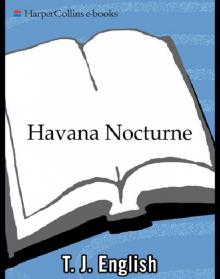 Havana Nocturne
Havana Nocturne Paddy Whacked
Paddy Whacked American Gangsters
American Gangsters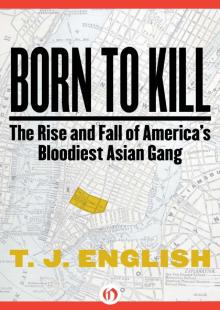 Born to Kill
Born to Kill Westies
Westies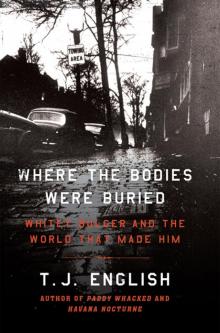 Where the Bodies Were Buried
Where the Bodies Were Buried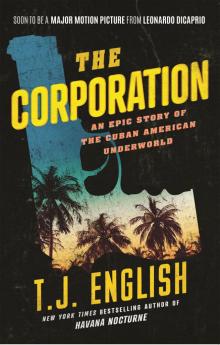 The Corporation
The Corporation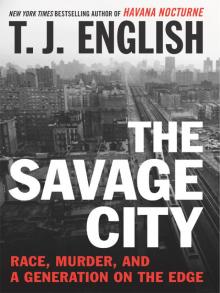 The Savage City
The Savage City